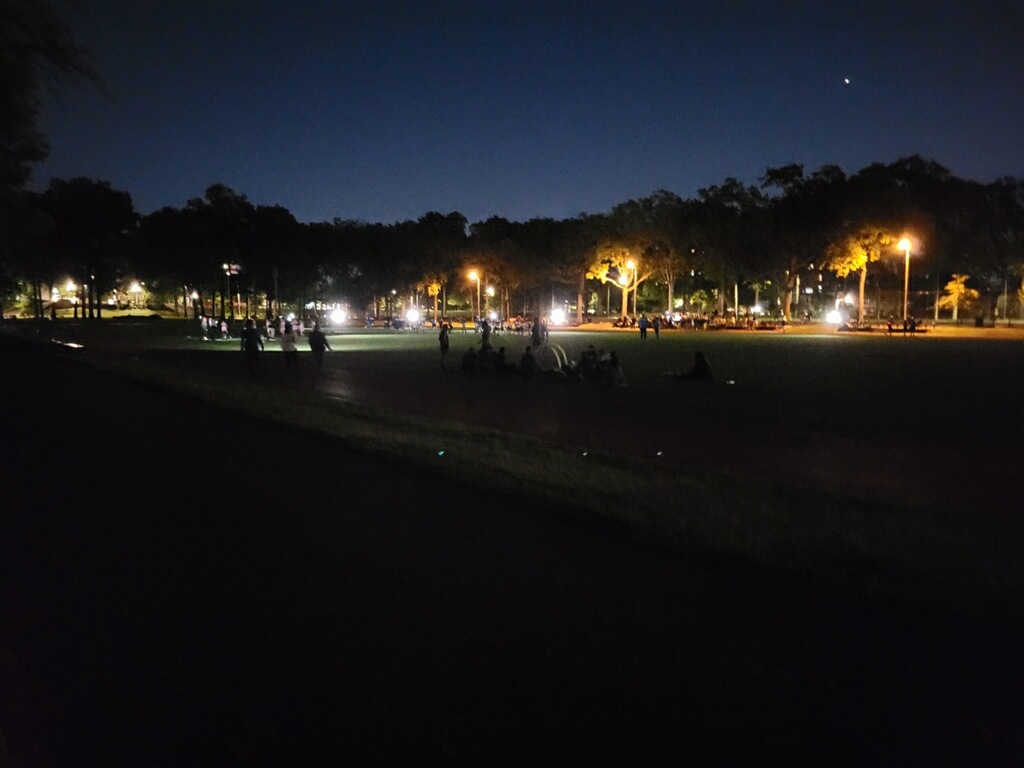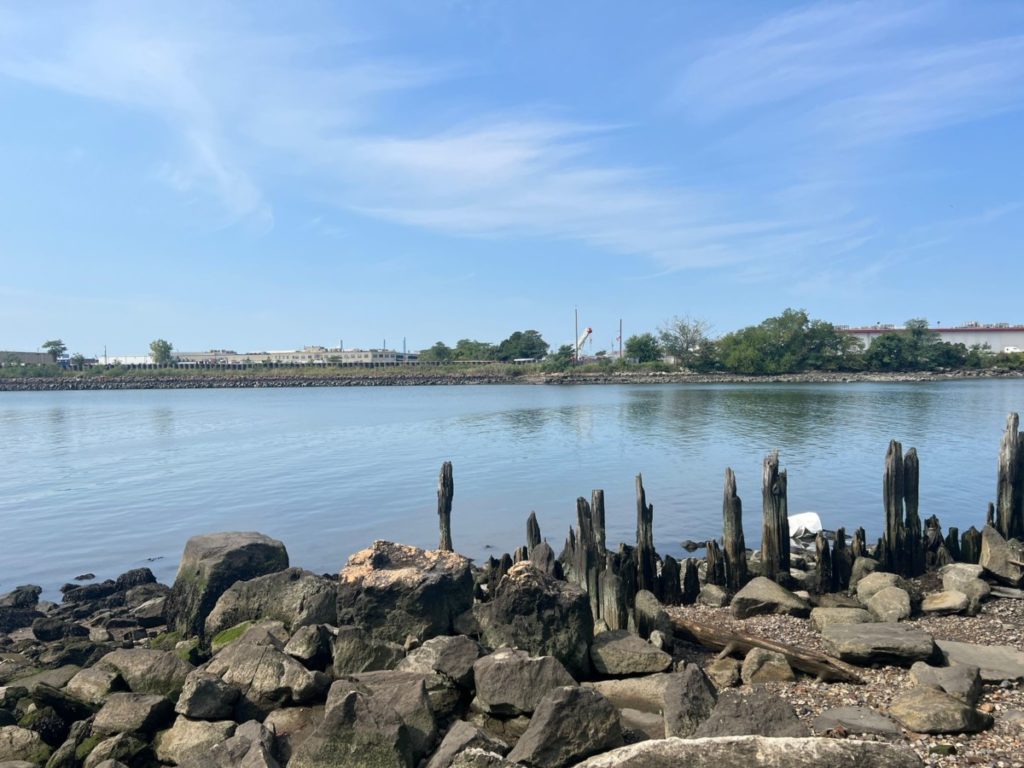
On Tuesday and Thursday evenings at the Williamsbridge Oval in The Bronx, kids, some of them as young as six, practice football and cheerleading.
But you probably won’t see them. More likely, you’ll only be able to make out the flashlights or glow-in-the-dark footballs they use during practices because the field at the oval doesn’t have any lights — and it hasn’t had any since at least 2013, the year The Bronx Knights Youth Tackle Football and Cheerleading participants started practicing there.
“It’s a reduced level of practice, but we practice nonetheless,” said Drake Holliday, president of The Bronx Knights.
And while football is already known to be a dangerous sport, playing in the dark raises even more safety concerns.
“Out of an abundance of caution, there’s certain things we cannot do,” said Holliday. “We have to scale back what the kids are actually doing, so it’s more walk-throughs than run-throughs.”
There’s not much lighting in the oval as a whole. At some points, the only reliable light source comes from the streetlights that border the park’s perimeter.
Elisandra Perez, a Williamsbridge resident and the parent of two program participants, doesn’t feel safe in the oval on her own at night because of the lighting situation. “[Me and my daughter] don’t really even bother to go over there in the nighttime to walk our dog, because you can’t see anything,” Perez said.
The team has had to take extra precautions to make sure that participants remain safe during practice.
“When [the kids] go to the restroom, they all go as a unit. No one goes to the restrooms or the community center unescorted,” Holliday said.
The Bronx Buccaneers, The Knights’ friendly neighborhood rival, have taken a different route: they use the oval’s facilities through August, and move to the nearby DeWitt Clinton High School in September when the days start getting shorter.
The team pays over $500 per month to the Department of Education to practice on DeWitt Clinton’s well-lit field and use their restroom facilities — and those fees make up about 30% of their monthly budget.
As a result, if The Bucs want to offer to take the players on a recreational trip to, say, a nearby theme park, players’ parents have to pay for it on top of the program’s registration fees.
“I have to short the kids on their jerseys, their uniforms, the things that we do with them outside of football, just to pay extra money so that they can have a safe football field to play on,” said Keith Spivey, who has been president of The Bucs for about eight years.
Some parents don’t have enough to cover the fees, so Spivey works with them to come up with a payment plan.
Representatives from both teams say that while they’ve been in contact with the New York City Department of Parks & Recreation about the issue, no action has been taken.
The department is “open to exploring a potential capital project there,” wrote Senior Press Officer Dan Kastanis in an email to The Bronx Ink.
A capital project is a long-term infrastructure investment that costs over $35,000. The majority of these projects are stand-alone contracts, which usually take about three and a half to four years to complete.
Capital projects that involve sports field lighting are in progress at one park in Manhattan, six parks in Queens, five parks in Brooklyn and five parks in The Bronx. There are no active projects underway at the Williamsbridge Oval.
“It’s always an obstacle, and we’re used to fighting through obstacles, but I would think if it comes to the safety of kids they would say ‘hey, let’s take a real look at this,’” said Spivey.
The Parks Department has previously told team representatives that one reason they haven’t added lights in the Oval is because doing so poses safety concerns, said Spivey, Holliday and The Knights’ General Manager Latanya Wilkinson.
The department did not respond to repeated inquiries about these claims.
Spivey, Holliday and Wilkinson agree that lights are more likely to decrease crime rates in the park.
“I personally don’t understand what safety issue they’re talking about. I actually think [lights] would be a deterrent…because nobody wants to commit a crime under bright lights,” Spivey said.
The football fields in the Bronx’s Soundview Park and Macombs Dam Park are lit until 11:00 pm every night of the week, according to a Parks Department representative.
“We do not give teams permits to play at unlit fields at night at any location, citywide,” wrote Kastanis.
The Bucs have explored other options in an effort to mitigate their costs.
Spivey looked into practicing on a field that had been rehabilitated by Take the Field, an early-aughts program that funded renovations for high school athletic field facilities across the boroughs. The program allows local groups, such as The Bucs, to use the updated facilities at no extra cost.
Seven fields in The Bronx were rehabilitated. The Williamsbridge Oval was not among them.
Spivey has elected not to make any of the rehabilitated fields The Bucs’ home base, because then parents and players would have to travel farther to get to and from each practice.
“It wouldn’t benefit us or the kids in our community…to travel an hour to go to football practice just because the facility is free,” said Spivey.
Another concern is that the players’ aren’t reaching their full potential because of the issue.
The Bucs and The Knights each play against teams from the other boroughs. Many of those teams practice on well-lit fields, meaning they’re not as limited by the shortened days.
“We’re practicing in the dark, trying to compete with teams that have their own facilities,” said Holliday. “We’re short, especially in comparison to other communities, who have so much more.”








